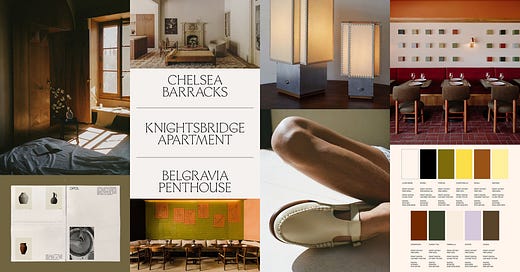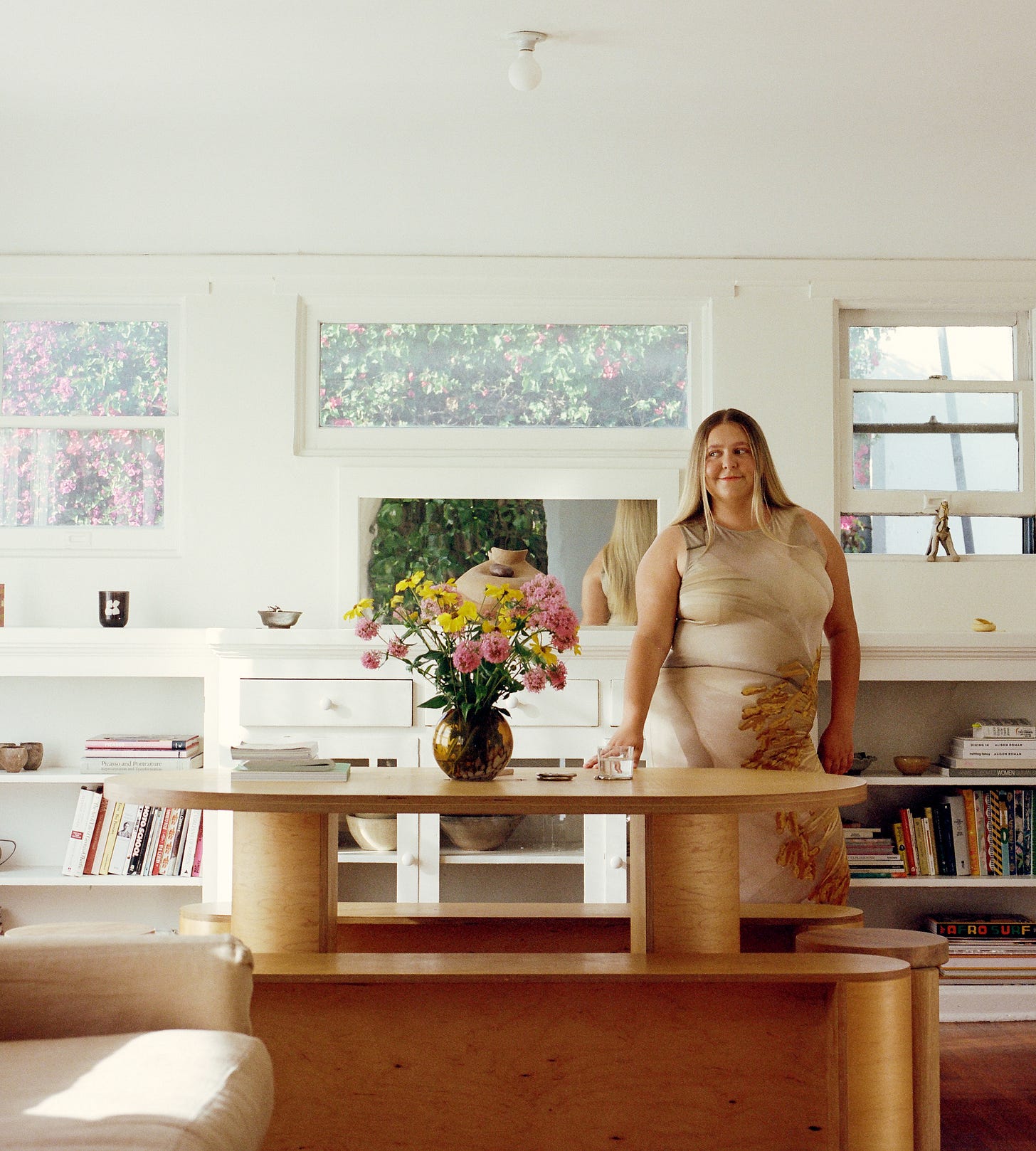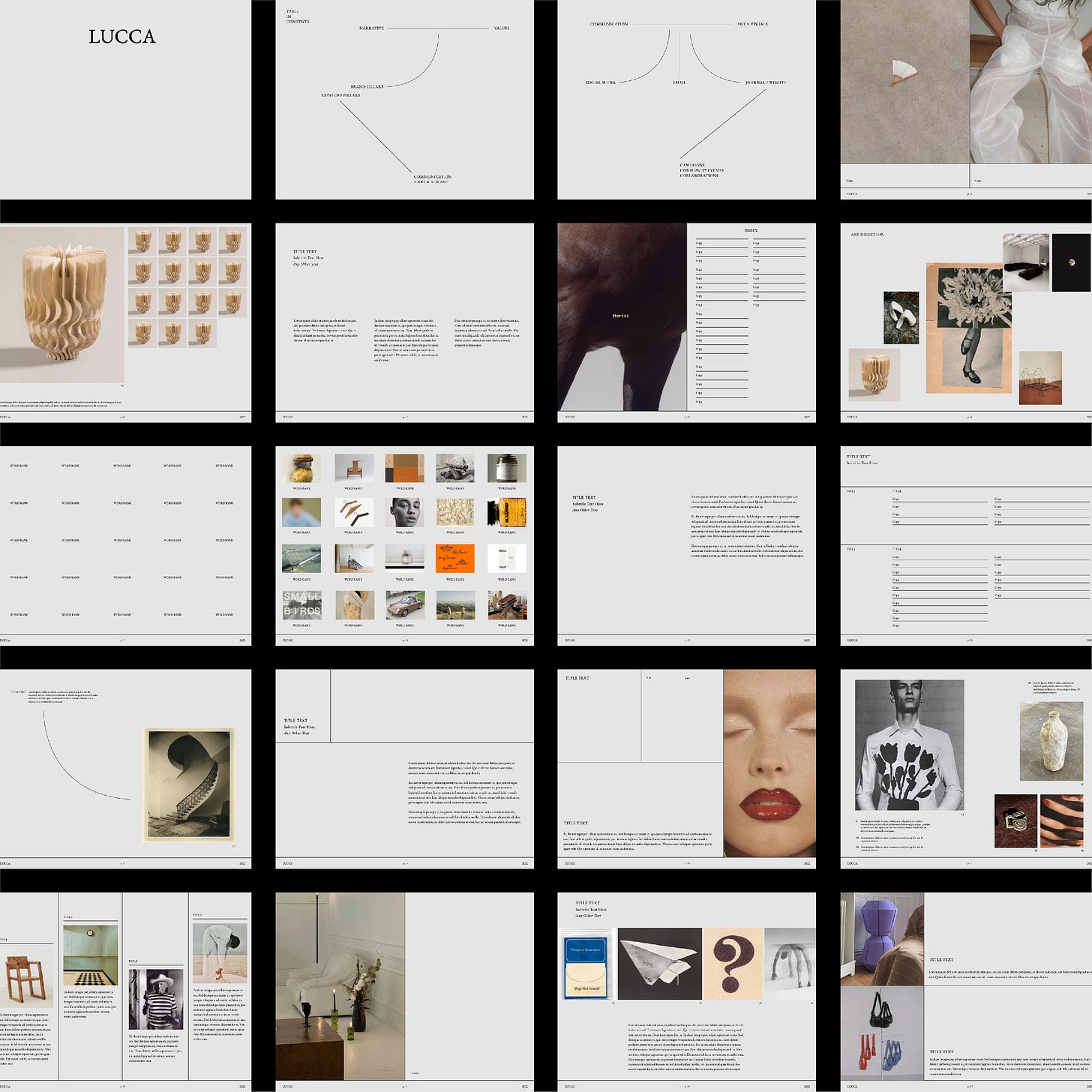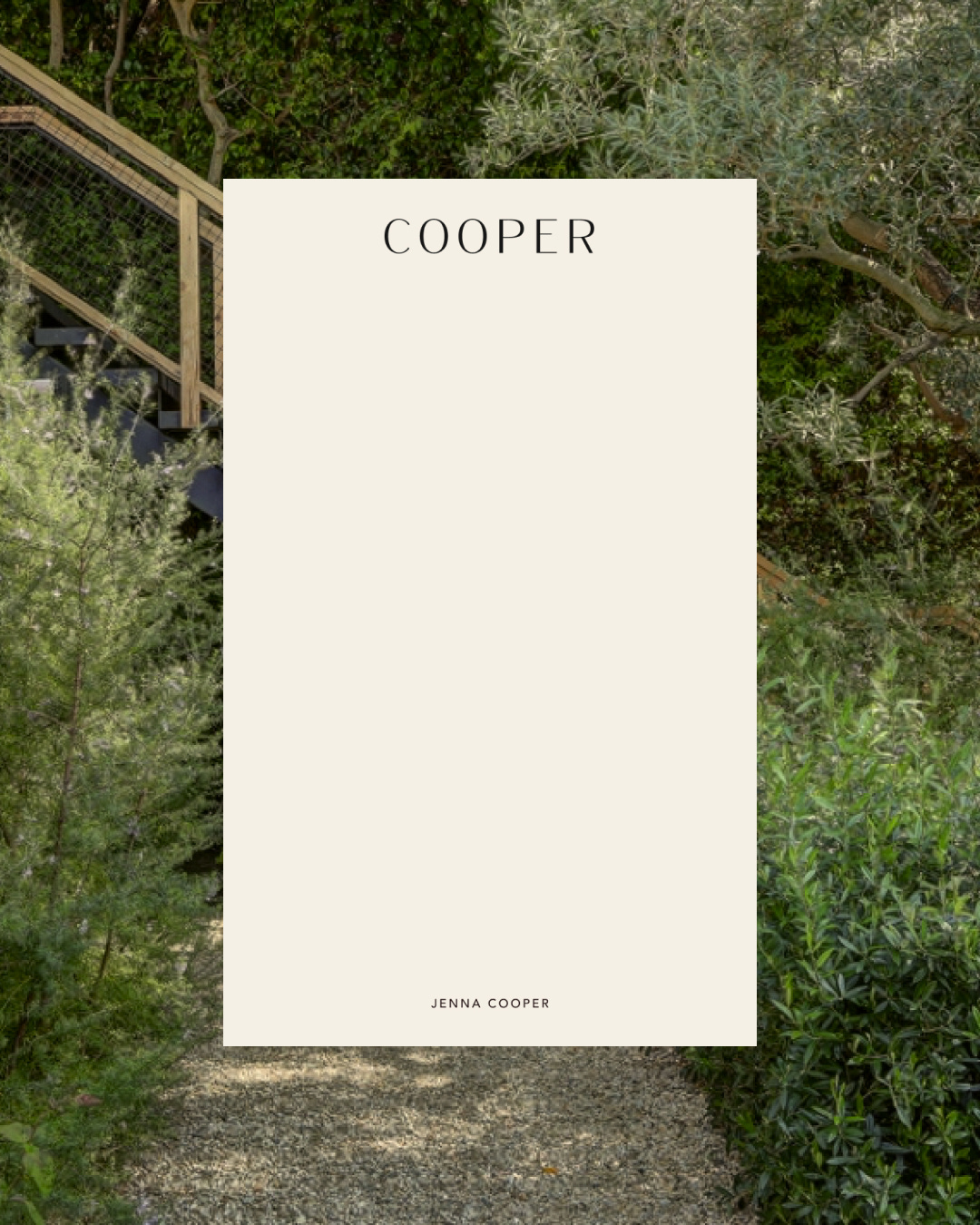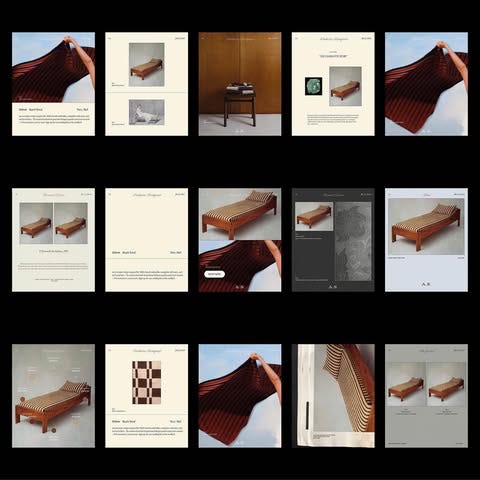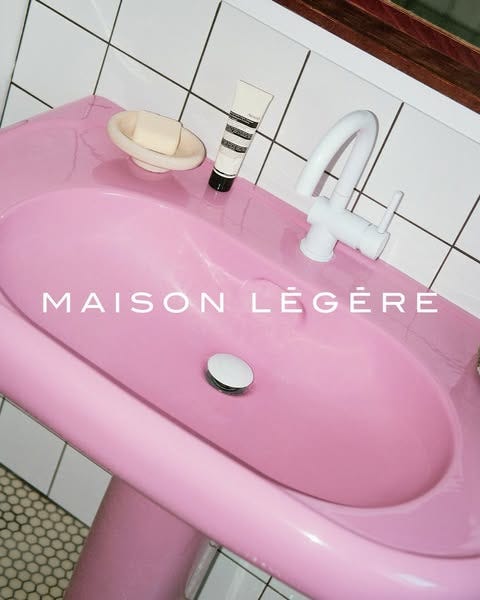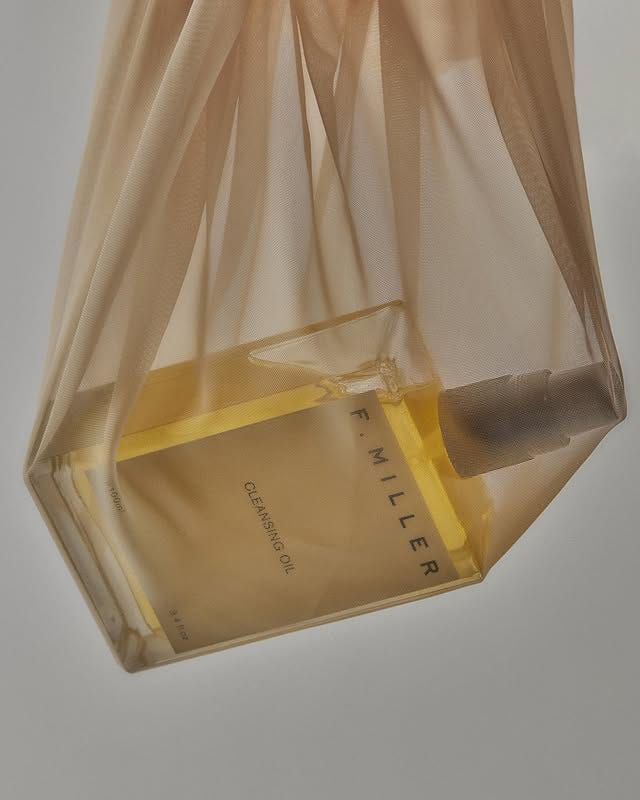I studied design in college, but most of the creative processes I still carry with me today weren’t learned there—they were learned once I entered the workforce and started working at fast-paced agencies. These were the kinds of environments where you said yes and figured it out along the way. This is a mentality I still carry with me in how I work today—only now, I am a more seasoned creative who is open to new challenges.
RULES TO KEEP MY CREATIVE PROCESS INSPIRED + ORGANIZED
Always have an intro call: Before I send a scope out, I always have an intro call (or coffee meet) with a prospective client. It’s important for me to connect energetically with a person before diving into working together. I have discovered that my number-one rule for compatibility in a working relationship is mutual respect.
Give your client homework: After a scope is signed, I send out a detailed questionnaire to my client—a lot of the time, this is where I get those really juicy storytelling bits that I inject into the brand. Ask for the story of how everything began for them or what their favorite thing is about what they do. Sometimes, when I read back the responses, I’ll tear up at the stories. Here are some ideas to get you started on your own questionnaire:
Describe what your business is in 5 words.
Who is your business for?
How do you want your audience to feel when they interact with your brand?
What sets your business apart from competitors?
What is an area you think your business could improve in?
What is your creative process like?
List some things that inspire you.
Moodboard like crazy and then pull back: A moodboarding phase is crucial to my creative process—it’s where I throw a million ideas onto a Figma board and then start weaving a story together. For branding projects, I always bring in references from all aspects of the brand: typography, design systems, photography, color, UX/UI, packaging examples, etc. Each page of a moodboard should feel like a continuation of the one before it. It’s okay if you don’t use every single image in the moodboards; instead, focus on communicating a cohesive story. I do a fair amount of pruning between when I start my moodboards and when I show them to the client.
Find inspiration in unexpected places: In this day and age, content is constantly being served to us on a silver platter. It feels as if we’re all seeing the same things all the time, and the algorithm is a bit… well, unoriginal. To find unique references, try getting off Pinterest and diving deep into an old Tumblr. Buy some old art books—or open the ones collecting dust on your shelves—and discover the pre-internet, knowledge-filled pages. Whenever I have the urge to buy something, I go to Better World Books and purchase a few. Some of my best purchases to-date include:
14,000 things to be happy about by Barbara Ann Kipfer
AFROSURF by Mami Wata
Japanese Detail: Cuisine by Sadao Hibi
Attach meaning to design elements: In my creative practice, I always try to bring in design elements that connect back to the person or brand. I want my designs to feel thoughtful, not random. Sometimes, this takes a lot of research or trial and error. For example, when working with Leigh Patterson of Lucca Studio on her presentation templates, we brought in an arced line element to create a unique roadmap for her table of contents. I then used the arc motif to point captions to images, and so on, to create a consistent design system.
Always include a mockup: A logo on a blank page is a great place to start when sharing logo concepts or iterations, but I’ve always had better luck “selling” a logo when I use it in a creative mockup that pertains to the client at hand. For a beauty brand, it might look like a packaging mockup. For a real estate agent, it could be custom stationery designs. For a restaurant, maybe a matchbook takeaway. Whatever it is, use all the other branding elements alongside the logo to help paint a full picture. This is what your client wants to see.
Written feedback is your best friend: Every client has a different way of giving feedback, and it’s up to us as designers to keep track of it all. To minimize mistakes (or missed feedback), I always ask for written feedback—whether it’s in the form of a list, notes tagged in a PDF, or anything that helps me keep everything straight. Trust me, you’ll thank yourself later.
After you learn about a project, be honest with yourself about whether it’s something you’re the right fit for. I’ve found that saying ‘no’ to the wrong projects often leads to more of the right ones landing in my lap. When I pass on a project, I never like to leave my prospective client empty-handed—rather, I send them a shortlist of designers I admire who may be a better fit.
SOME DESIGNERS I ADMIRE
Lisbeth Antoine: A designer who I consider a master in tactility and typography. I specifically love these social templates she did for Autumn Sonata.
Jimena Gamio: I had the pleasure of working with Jimena at Atelier Ace (Ace Hotel’s in-house agency). One of the most talented designers I’ve ever met… with a stacked roster including: Apple, The Future Perfect, Levi’s, Feminist Center for Creative Work, Nike, and more.
Djelissa Latini: A bold & colorful designer based in Paris, France—also half of odds.studio working on all of the coolest European brands in the food, lifestyle and beauty space.
Ali LaBelle: A true creative with such a dialed vision with notable projects such as Pasta Girlfriend, her substack à la carte, and the rebrand she just did for Alfred Coffee.
Skyler Tulchin: A force in the beauty and wellness space–her work is both soft and bold; with clients such as Merit, Versed, F. Miller & more.
I hope you find value in this—each week I’ll dive deeper into the creative processes that shape meaningful brands. If this connects, consider becoming a paid subscriber for $5 a month. I’ll be sharing peeks into projects, practical tips for building brands that resonate, and interviews with industry leaders who inspire.
xM


